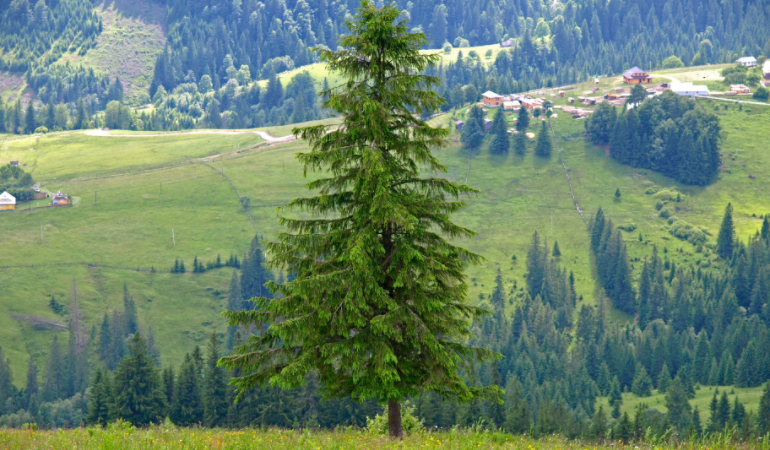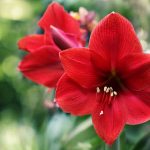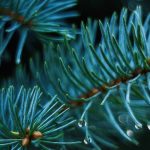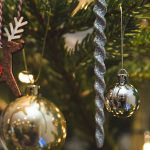
Evergreens remind us of winter, fresh scents and the Christmas holidays. One of the fastest-growing and long-lasting evergreen trees in the UK is the Norway spruce (its botanical name is Picea abies), which, although not native to UK, is highly widespread in the country.
Due to its traditional green needles, conical shape and pine scent, many people like the idea of growing Nordic spruce in pots or directly in their gardens and making it into their Christmas tree when the festive season comes. Moreover, this evergreen tree variety comes at affordable pricing.
If you don’t have experience in growing evergreen trees, you may be wondering how to plant and care for a Norway spruce yourself. Or you simply feel like you don’t know all there is to know and you want to make sure you are taking care of your plant the proper way.
Frankly, growing a Norway Spruce Christmas tree is relatively easy. The main things the tree will need are space, enough water and light, adequate humidity and good drainage. To learn more about planting a Norway spruce tree and taking care of it, read on. We have prepared some useful tips for you.
Table of Contents
Norway Spruce characteristics
Since Prince Albert introduced the old German custom to decorate Norway spruce trees for Christmas, this tree variety has become popular on the British Isles. To help you understand the specifications of growing a Norway spruce and familiarise yourself with its appearance so that you can tell it apart from other evergreens, we have put together some of the key characteristics of Norwegian spruce trees.
- Growth rate and mature size: The Norway spruce tree grows at a medium to fast rate, adding approximately 60-90cm to its height each year. It is the fastest-growing tree of spruces, and it can reach up to 30 – 40m in height and 7 – 10m in width.
- Needles and fruits: The needles are square-shaped, green in colour and release a rich, sweet scent. After pollinating, female flowers turn into long, diamond-shaped cones that hang down on the branches and have overlapping red-brown scales.
- Norway spruce tree’s lifespan: Norwegian spruce can live for up to 300-400 years, although if grown in a pot, its lifespan is usually shorter, a maximum of 100 years. It takes from 50 to 80 years for the tree to reach its mature state.
- Wildlife value: One of the benefits of growing a Norway spruce is its high wildlife value. It is the natural habitat of various species, such as beetles, hoverflies and weevils, as well as owls, hawks, and some songbirds. This evergreen tree serves as a shelter for deer, hare, grouse and woodcock. The foliage is food for the caterpillars of several moth species, while red squirrels favour the cones.
How to grow Norway spruce from seeds
With its symmetrical shape and gorgeous blue-green foliage, the Nordic spruce tree is aesthetically pleasing to the eye and can also be a beautiful feature of your garden. It can be easily propagated from seeds, which can sprout quickly. However, it’s essential to know that they are vulnerable to bacteria and fungi, and they must be kept in the proper condition.
- Collect the seeds – You should collect the cones in early/mid fall before they fully ripen and split open and after they turn light brown, simply because rodents and insects tend to target the cones, which in itself can make the seeds lifeless. Place the previously collected cones in a dry area for about 2 weeks so the seeds have time to fall off naturally.
- Pretreat the seeds – Norwegian fir seeds tend to germinate generally well without pretreatment; however, the process will be faster if primed in water and cold stratified. You must place the seeds in sealable bags and leave them in your fridge for 3 weeks. After that, put them in water to soak for 24 hours so their seed cover softens. Rotten and lifeless seeds will float at the top, so just remove them and sow the ones at the bottom.
- Sowing – Norway spruce seeds grow best in deep pots filled with sand-based soil because the appropriate drainage and container size also offers enough room for the long roots. Ensure you clean the pot thoroughly with 10% bleach to sanitise it to avoid infections. As an additional safety precaution, you can also dust fungicidal powder onto the seeds as well. Sow the seeds at a 1/4 th inch depth.
- Conditions for germination – Norwegian spruce grows best in cold and dark areas, hence why they require lower germination temperatures compared to other tree species. The seeds don’t need additional watering during the rainy seasons. However, ensure to water them to a depth of 3 inches if rain is absent for longer than two weeks. Usually, Norway spruce seeds will germinate somewhere between 1-3 weeks once daytime temperatures reach about 24 degrees Celsius (75 degrees Fahrenheit).
- Planting and aftercare – Remember that Norway spruce saplings will need more time to establish a proper root system in warmer climates, hence why growing in pots for the first two seasons is highly recommended. During the hottest part of the day, they should be kept in light shade and remember to supplementary water them at least once weekly. The saplings will need extra room to grow, so move them to a bigger pot each season (1-2 inches bigger). Plant them in sandy and slightly acidic soil, and place them shallowly with the main trunk’s base 1-2 inches above the soil line. When Autumn arrives, you should plant the saplings in a permanent bed in their second year.
Norway Spruce planting process
Transplanting a Nordic spruce tree is a relatively straightforward process, even if this is your first time doing it. Before beginning, ensure the location is appropriate for growing this evergreen beauty. Think about spacing, access to light, drainage and soil. Once this is settled, it’s time to get down to work. Here is our step-by-step guide on how to plant Norway spruce:
- Dig a large hole, preferably twice the size of the nursery pot or the tree’s root system.
- Take the tree out of its pot, along with the surrounding soil. If the pot is made of plastic, cut it away to avoid pulling at the trunk.
- Dampen the roots and set them into the hole, ensuring the trunk is standing straight.
- Pack the soil in by tamping it down around the roots to avoid the creation of air pockets that can dry out the roots.
- Water the plant.
How far apart should Norway Spruce trees be planted?
Norway spruce can grow swiftly and become very tall if given space to do so. The recommended planting distance depends on whether the tree will be used as a Christmas tree or a windbreak. For windbreak, 120-180 inches of distance should be enough, as for Christmas trees you can go for 72 to 96 inches.
Don’t plant the tree too close to a building, sidewalk and road. Considering that Nordic spruce can reach a width of 7-10m, allow enough open space for your tree to grow freely.
Sun and soil preference
This evergreen tree grows in a variety of conditions. However, it thrives when in full sun or partial shade. Do not plant the spruce in a full-shade location, as it requires at least 6 hours of direct sunlight per day.
The soil, where you will plant your Norway Spruce, has to be rich, moist, yet well-drained and slightly acidic. The tree does well in loamy, clay and sandy soils.
Water requirements
Norwеgian spruce is a hardy tree that doesn’t require much maintenance once established. However, it is not a drought-tolerant plant. Young trees need adequate watering, which has to be more frequent, especially during hot, dry spells. Well-established trees require very little care. Nevertheless, deep water during the summer months or when you notice that the soil is on the dry side.
Fertiliser
After the planting of a young tree, mild, slow-acting fertiliser can be beneficial for the plant during the initial growing season. Established Norway spruce trees don’t have any special fertiliser needs, but if you want to make sure the soil is rich and fertile enough, you can feed your plant with fertiliser twice a month during early spring and once a month during the summer period.
Never fertilise just before winter when the tree slows down its growth rate.
How to look after your Norway Spruce tree?
Norway Spruce makes a good Christmas tree, but you can still implement some habits to ensure your tree stays healthy and robust. Here is some helpful information that we suggest you follow:
- Each spring spread a layer of mulch 5cm away from the tree trunk and at a radius of 10cm.
- During the summer, it is recommended that you water the tree extensively once a week, until mid-August. You can place a soaker hose around the tree and run it for at least 1 hour.
- Once you notice new growth in spring, begin applying a 20-20-20 fertiliser, following the instructions on the back of the product.
- Conduct regular inspections for mite infestation. The insects are very difficult to see but you might notice yellowing at the base of the older needles. To get rid of the pests, use insecticidal soap or a commercial miticide.
Diseases
This beautiful evergreen tree can be affected by several diseases. The ones that aren’t as common are Stereum (decay fungi), Heterobasidion (root rot) and Elatobium (green spruce aphid).
The most common ones are Rhizosphaera needle cast and Cytospora canker. Both of these commonly occur because of tree fungus growth, however, their symptoms are different.
The common symptoms of Cytospora canker disease are:
- Yellow or orange spots on the trunk’s surface.
- Oozing liquid from pimple-looking bumps.
Rhizosphaera needle cast negatively affects Norway spruce’s foliage. The tree gives the following hints if it suffers from this illness:
- In late summer or early autumn, its needles can become purple-brown.
- You will also notice that the needles start falling rapidly.
Preventative and treatment tips
Taking proper care of your trees significantly reduces the risk of diseases. Also, regular inspections make you identify diseases soon, which can save a tree’s life. When an illness affects a tree, it weakens it, worsening its condition.
The ways to prevent stress on Norway spruce trees are the following:
- Make sure you don’t overwater it.
- Prevent trunk damage by keeping a reasonable distance from the tree when you mow the lawn or trim weeds.
- As a preventative measure, spray the tree with fungicide twice a year. This will significantly reduce the chance of Cytospora canker disease and Rhizosphaera needle cast infecting Nordic spruce because the fungus will die before it sets in.
When those diseases infect the tree, the best practices are to:
- Clean exposed areas and cuts with a fungicide.
- Prune infected branches and remove dead bark.
- Disinfect your tools with chlorine when you finish working on the tree. This will prevent the disease from spreading.
Looking to buy a young Norway spruce?
If after reading this article, you feel excited about buying yourself a new living Norway spruce tree for the upcoming Christmas holidays, consider booking a delivery. Fantastic Gardeners offers pot-grown 2-3ft Norway spruce trees, which can be delivered right to your home by a friendly team of gardeners.
After the end of the holidays, the expert gardeners can also help you with transplanting the tree into a larger pot or right into your garden. For a sustainable and authentic Christmas, order pot-grown Norway spruce and book a delivery date that will suit your schedule.
Get a beautiful Norway Spruce tree delivered by Fantastic Gardeners with just a click!
Enter your postcode to view our rates and availability in your area.
For questions about the services we offer visit our main site
***
Have you got any questions or suggestions for us? Share them in the comments section below. We would love to hear from you!
Image source: Shutterstock / Roden Wilmar



